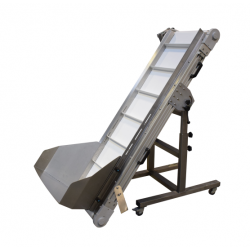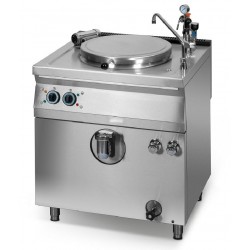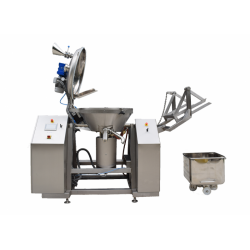Fruits, vegetables, berries, mushrooms
Processing fruits, vegetables, berries and mushroom has a lot of common and typically involves several steps, depending on the type of the product and the final type of food you want to produce. Here are some general steps to consider when processing fruits and vegetables on an industrial scale:
- Sorting and washing: The products should be sorted to remove any damaged or spoiled fruits, vegetables, berries or mushrooms, and washed to remove any dirt, debris, or pesticides. This is typically done using water, brushes, and sometimes chemicals.
- Preparing: The products may need to be prepared before processing, which could include peeling, slicing, coring, pitting, or deseeding.
- Cutting and macerating: Depending on the product you want to produce, the inlet product may need to be cut or macerated. For example, if you are making fruit juice, the fruits may be cut into smaller pieces and then macerated to release the juice.
- Heating, blanching or pasteurization: To ensure the safety and stability of the product, it may be necessary to heat or pasteurize the fruit, either before or after cutting and macerating. Vegetables can be blanched to deactivate enzymes that can cause spoilage and reduce the quality of the vegetables.
- Pressing and filtration: If you are making juice, the juice may need to be pressed out of the fruit and then filtered to remove any pulp or solids.
- Concentrating: Depending on the final product, the juice may need to be concentrated to increase the sugar content and reduce the water content.
- Drying is a common method of preserving fruits, vegetables, and mushrooms. By removing moisture from these foods, drying slows down the growth of bacteria and mold, which can cause spoilage. Dried fruits, vegetables, and mushrooms are also convenient for storage and transport, and they can be used in a variety of dishes, including soups, stews, and baked goods.
- Packaging: The final product can then be packaged in bottles, cans, or other containers, and labeled and shipped to customers.
These are some of the general steps involved in processing fruits on an industrial scale. The exact process will depend on the type of fruit and the final product you want to produce.
Have a look on to the list of the equipment needed to process fruits, vegetables, berries and mushrooms.
1. Washers: Used to clean and remove dirt and debris from the products.
2. Sorters: Used to sort and remove any damaged or spoiled pieces.
3. Peelers/corers/pitters: Used to prepare the crops for processing by removing the peel, core, or pits.
4. Slicers/cutters: Used to cut the fruits into smaller pieces for further processing.
5. Crushers/macerators: Used to crush or macerate the fruit to release juice or pulp.
6. Presses: Used to press the juice out of the crushed or macerated products.
7. Pulpers: Used to separate the juice from the pulp and solids.
8. Concentrators: Used to concentrate the juice by removing water.
9. Pasteurizers: Used to heat or pasteurize the juice to ensure safety and stability.
10. Filling machines: Used to fill bottles, cans, or other containers with the processed product.
11. Dryers. If you want to produce dried vegetables, fruits, mushrooms or berries, you will need industrial drying plants.
12. Labeling machines: Used to label the containers with product information and branding.
13. Packaging machines: Used to package the containers into cases or crates for shipping.
These are just some of the equipment that may be used in industrial fruit, vegetable, berries and mushroom processing. The specific equipment needed will depend on the type of fruit and the final product you want to produce.

 English
English
 Deutsch
Deutsch
 Français
Français
 Español
Español
 Italiano
Italiano
 Português PT
Português PT











